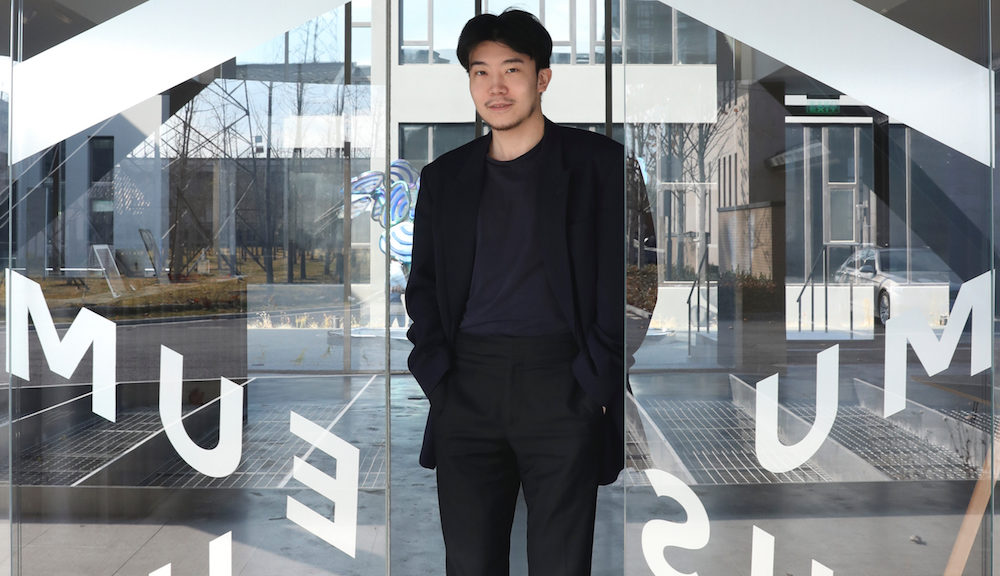In March 2021, X Museum founder Michael Xufu Huang sued Federico Castro Debernardi, the Monaco-based founder of an Argentine art foundation, for allegedly breaching an agreement revolving around the age-old question of whether galleries have legal standing to equip their invoices with resale restrictions.
Although the two parties settled out of court only hours after the story’s publication, I still think the fracas provides some insights on an evergreen topic in our speculation-fueled market.
In fact, what emerged in a nine-month flurry of court filings was that Huang had struck similar art-advisor-like pacts with Debernardi to secure two more in-demand artworks: Nicolas Party’s Two Faces .
The real problem for Huang arose in August 2020, when Paula Cooper Gallery told him it had learned Faeriefeller was resold by fellow New York blue-chippers Lévy Gorvy that March—only four months after the date on Huang’s invoice.
Correspondence submitted as evidence shows that this was the point where Huang freaked out on Debernardi.
He then went on to file the suit against Debernardi in March 2021, and after the two exchanged haymakers in court filings, ultimately reached a settlement last week.
There are still plenty of questions about what happened behind the scenes.
The enforceability of gallery-imposed resale covenants has been debated for about as long as modern art-market speculation has existed.
Plus, history has shown that the resolution of a flipping-sparked conflict often depends on factors that have little to do with the parties’ estimations of whether the law is on their side.
Although they are plainly “anti-competitive” in a strict sense, they are also clearly defined and tend to last no longer than one year—hence their folksy alias, “gardening leave.” The signees routinely honor these provisions if and when they take a high-profile new job with another house, and they do so because such limited non-compete clauses have generally proven to hold up in U.S.
But if the gallery stipulates, as Paula Cooper did for Faeriefeller, that its right of first refusal lasts only a few years and places no ceiling on secondary-market pricing, its resale covenant stands a stronger chance of surviving a legal challenge.
Not coincidentally, Huang’s counsel used a version of this argument against Debernardi’s accusations of market manipulation.
In this case, when Paula Cooper threatened to sue Huang for damages, he knew the gallery could pump tens, if not hundreds, of thousands of dollars into litigation to protect its interests.
The killer isn’t even necessarily the billable hours ; pursuing or defending against a lawsuit also takes time and mental energy that the average small business-owner needs to channel into actually doing business.
In general, threatening to sue a collector is the nuclear option; it means the gallery has no fear of a future without that client relationship.
By the way, sources with experience in similar cases suggested to me that Huang’s settlement with Cooper was likely to be in the neighborhood of the total damages Huang sought from Debernardi he was estimated to have suffered in his amended complaint.
More often than not, a settlement between the gallery and the original buyer cannot unwind any subsequent transactions made for an artwork sold in breach of a right-of-first-refusal agreement.
Since auction houses have no interest in getting sidelined because of resale-restriction dramas, sources tell me, it’s not uncommon for them to help broker creative solutions that allow fraught consignments to reach the block instead of being withdrawn.
In rare cases, the house might even offer to give the gallery a paddle and, if the gallery wins the lot, sell it to them at the underbidder’s price… though, in practice, this last one may just be a poison pill intended to get the gallery to stand down.
To sum up, then, the art world has shown again and again that it can and will police resale restrictions internally by whatever means are within its power and appropriate to the circumstances.
